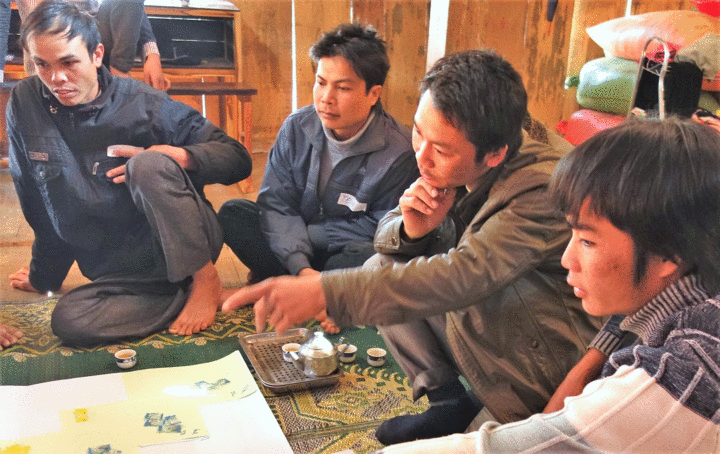Using vignettes to explore gender issues related to food security and nutrition

Giulia Micheletti, Marlène Elias, and Jessica Raneri of Bioversity International describe a nutrition-sensitive version of GENNOVATE, in which a vignette tool was developed and piloted to understand household decisions related to diets and nutrition.
Nutrition-sensitive interventions typically focus on children and women of childbearing age, who are particularly vulnerable to nutrient deficiencies. However, what continues to be missing in these interventions is a closer consideration of local social norms, which shape food allocation decisions.
Gender social norms shape food- and nutrition-related decisions within a household, who makes them, what is decided, and how. They influence who can access nutritious food, when, and in what quantities. Gender norms also influence who in the household is responsible for acquiring and preparing food. Although understanding gender norms is critical for addressing poor nutritional outcomes in women and children, they are rarely taken into account in nutrition interventions.
Using fictional images to address gender norms
GENNOVATE is a global comparative research initiative that uses qualitative methods to address how gender norms influence adoption of agricultural and natural resource management innovations. Bioversity International and the CGIAR Research Program on Agriculture for Nutrition and Health (A4NH) partners developed a nutrition-sensitive version of GENNOVATE to explore how gender norms also affect the nutrition of poor and middle-income rural dwellers. One part of this research were vignettes representing relatable fictional scenarios within a fictional household to elicit participants’ perceptions around what motivates certain actions or how they think people may react to particular situations. Such vignettes are particularly helpful when dealing with sensitive issues as participants feel less threatened discussing stories about third parties than being asked directly and themselves having to disclose information about their own actions or experiences. These vignettes can serve as an entry point to begin to address gender norms.
The vignettes are used to ask participants – grouped by gender, age and socio-economic status – a series of questions related to the division of labor and decision-making when it comes to food: which fictional family members in the vignettes they believe would carry out nutrition-related activities, who would make decisions, on what basis, and why.
Vignettes in practice
The nutrition-sensitive vignette tool was applied in two villages in Son La province among the Thai ethnic minority group in north-west Vietnam. The resulting information was then used in a research-for-development project on how to engage family members in tailored nutrition-related interventions that are sensitive to the social context.
Despite a Thai cultural belief that men are the “pillars of the family,” men and women spouses discussed food and nutrition issues together and both – along with other household members – were involved in different stages of the nutrition pathway.
“When we have abundant meat, I’ll tell my husband to put it above stove for saving. He expects to make the decision, but if I disagree, he would listen to me.”
“The husband can taste good dishes outside of the home and ask his wife if she can make it.”
- Respondents in Son La province, Vietnam
While this tool was first applied within the GENNOVATE study, it can be applied in other projects, tailored to fit different cultural contexts, and combined with other methods. It can be applied with focus groups or individual interviews and can be repeated over time to monitor changes in nutrition-related practices.
See the full blog post, originally published on A4NH.
This research is part of the CGIAR Research Program on Agriculture for Nutrition and Health (A4NH) and is supported by CGIAR Trust Fund Donors.
